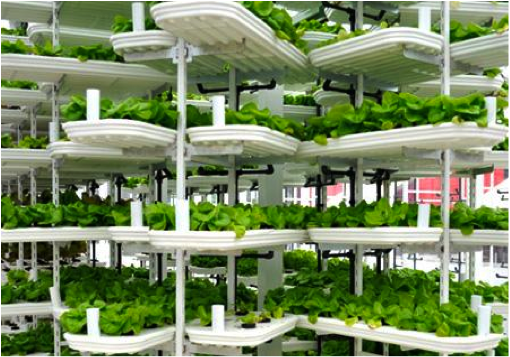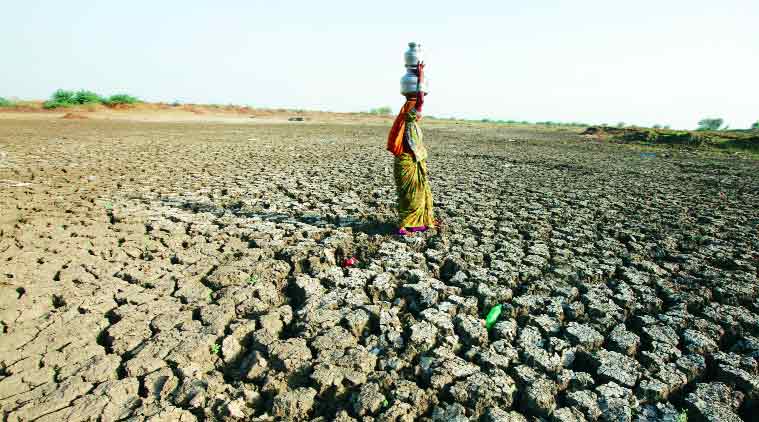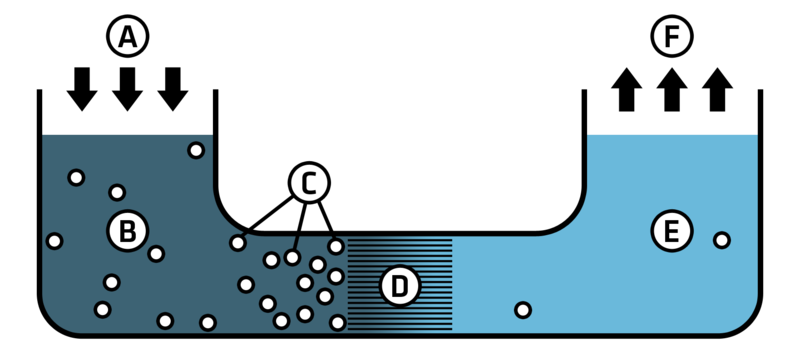When we think about growing food on a farm, all we can see is that farmers have to work 24 hours a day and collect all the main crops during harvest without having rest. According to the most recent survey, more than 80% of the teenagers in Africa do not want to be farmers when they grow up (1). It is generally acknowledged that farmers in most of the countries have the least income as well as a poor educational background.
Caleb Harper, also known as the director of media lab in MIT (2), is developing a new technology which is called “digital farm.” It is unbelievable that this technology can actually lead to an astonishing agricultural revolution. By using computer science and engineering, we can grow plants in only three weeks without using soil, 95% water (3) and heavy labor. Vegetables or fruits which grow under such controlled environment will also be more delicious than normal food that grows inside common farms.

Graph 1: the First vertical urban farm in North America(Canada) Posted by Ed. Source: https://www.indoorfarmer.ca/2-uncategorised/28-north-america-s-first-vertical-urban-farm-is-being-built-in-canada
In the natural environment, only the “perfect” habitat can provide enough nutrients and conditions to grow delicious vegetables and fruits. However, how can we define “perfect” ? In Xinjiang, China, fruits are very sweet and juicy due to the special climate. During daytime, under the exposure of strong sunlight, the process of photosynthesis(4) can be very productive. During the night, plants will breathe and consume energy which is produced from photosynthesis(4). However, when local plants breathe through the stomata on their leafs, because of the super cool temperature in Xinjiang during the night, the stomata on leafs is closed to protect the plant itself. Therefore, the respiration process is much slower and less energy is consumed in the form of glucose. Consequently, all the sweetness which is created by glucose just accumulates inside the fruits. (5) Consequently, we can see that how environmental conditions can actually change the tastes of fruits and vegetables.
Inside the media lab, scientists are using the computer to monitor the environment. All important factors for growing plants, such as temperature, humidity, UV-light exposure will be controlled, which can lead to a special “climate” inside a small room. After multiple experiments, the “perfect” condition can be found. The desirable tastes of all types of food can be achieved through changing every small scale of the different environmental factor. With this technology, the cost of international transportation will be largely reduced. Furthermore, because no soil is needed in digital lab, heavy labor is also not required during harvest season.

There is a growing tendency that scientists and university students are willing to donate themselves to this research area. In other words, more and more young people are willing to be “farmers”, and they are both computer scientists, engineers, chemists, biologists… In the future, farmers will not be a job that everyone dislikes. In my opinion, “digital lab” can not only protect our local environment but also can improve the educational system of agriculture. The food industry needs more people with abilities. In the future, “farmers” will be high-paid jobs around the globe, and I have faith that together, we can make this world a better place.
Reference:
- Youth in farming: Youth using ICTS to earn incomes in running agricultural farms. http://www.youthinfarming.org/2011/12/15-major-reasons-youth-in-africa-do-not.html
- Caleb Harper | MIT media lab. https://www.media.mit.edu/people/calebh
- Vertical Farming in Singapore– The future of agriculture. http://permaculturenews.org/2014/07/25/vertical-farming-singapores-solution-feed-local-urban-population/
- Chemistry for biologists–Photosynthesis. http://permaculturenews.org/2014/07/25/vertical-farming-singapores-solution-feed-local-urban-population/
- Respiration in plants. http://www.funscience.in/study-zone/Biology/Respiration/RespirationInPlants.php





 (Graph 2: The location of corpus Callosum) Author: Saskia Steinmann, Gregor Leicht and Christoph Mulert Source: pictures uploaded by the original photographer.
(Graph 2: The location of corpus Callosum) Author: Saskia Steinmann, Gregor Leicht and Christoph Mulert Source: pictures uploaded by the original photographer.
